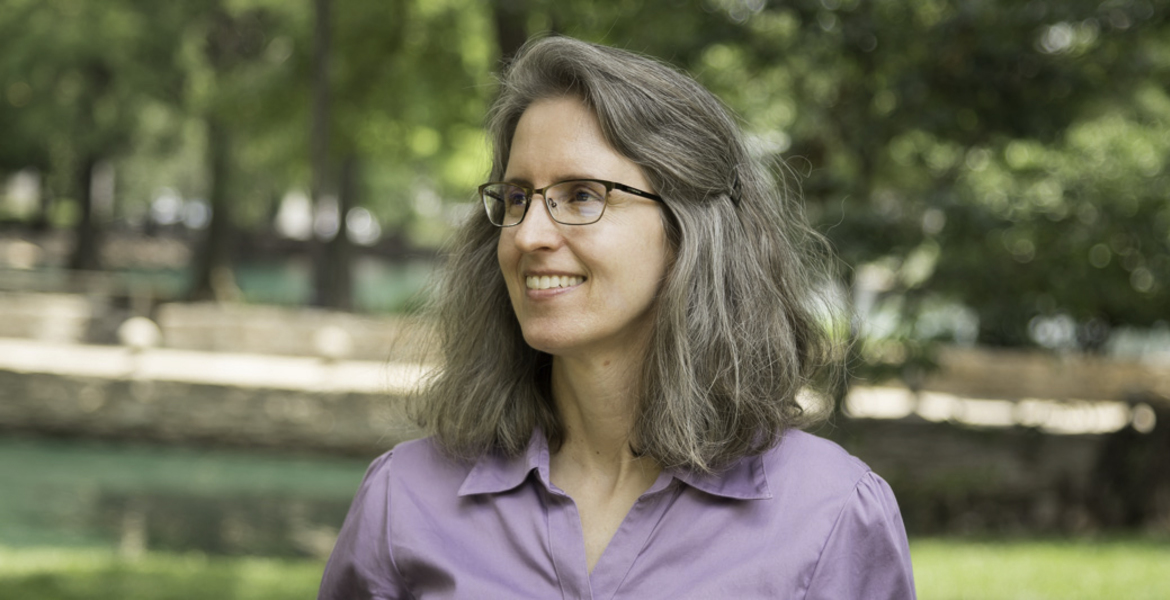
Greiner: Geography is more than just countries and capitals
Wednesday, July 18, 2018
Many people oversimplify the concept of geography, thinking of it as memorizing maps. Speak with Alyson Greiner, head of the Department of Geography, and she will explain how much more interesting it is than that.
For example, as a cultural historical geographer, she specializes in the similarities and differences between America and Australia. She is fascinated by the ways Oklahoma’s landscape changed as a part of the New Deal projects during the Great Depression, including eradicating malaria. She even explains the northward migration of the sweet-tea line – the prevalence of that drink has historically been one way to differentiate the South from its neighboring regions, but that boundary is moving, or at least blurring, of late.
“Geography is the relationship between people and place, which includes the environment,” Greiner said. “It also involves the use of technologies to help us better understand our environment and how we’re changing it. We do a lot with remote sensing, which is made possible by satellites with sensors that detect different types of energy and enable us to analyze transformations in the landscape, such as the loss of agricultural land to urban growth or sprawl. And, of course, we do a lot with maps and mapping.”
The Department of Geography offers three majors to fit the demands of today’s students: geography, geospatial information science, and global studies. The latter is the newest, designed with three emphases: culture of the arts and humanities, geopolitics and the global economy, and global sustainability.
To underscore the point about the breadth of knowledge included in geography, Greiner rattled off what some of her colleagues are researching. That includes geoarchaeologist Carlos Cordova’s palynology, which is the study of ancient pollen grains to learn about the vegetative landscape of different places and times. Jacqueline Vadjunec has a research project in the Oklahoma Panhandle and parts of New Mexico examining how ranchers cope with environmental changes, especially the recurring drought.
Dale Lightfoot studies water-related technologies, including the distribution and diffusion of qanats, underground channels used for irrigation predominantly in the Middle East. Also, Rebecca Sheehan is examining the contentious issue of removing Confederate monuments in New Orleans.
“We also have a project where we are working with the Oklahoma Tourism and Recreation Department to develop resource-management plans for the parks,” Greiner said. “Our department embodies a great deal of research diversity. Many of the faculty also teach and lead study-abroad courses.”
Greiner came to OSU in 1996 after completing her Ph.D. at the University of Texas. She had earned a 1991 master’s at the University of Missouri, and a 1988 bachelor’s at the University of Mary Washington in her native Virginia. She moved to Oklahoma with her husband, Luis Montes, who has been chair of the University of Central Oklahoma’s Department of Chemistry since 2012.
Greiner took on her own administrative role at OSU last January. She is responsible for overseeing the day-to-day operations of the Department of Geography, which includes the faculty, staff and students.
“I really keep in mind that the students are the reason we are here,” Greiner said. “That affects everything from making sure we have classes scheduled appropriately, in terms of course subjects and also sections open, to helping facilitate drops and adds and registration. I also help manage the day-to-day affairs of the department, from overseeing things like ordering supplies to managing the budget.”
She also oversees the hiring, promotion and retention of faculty. Attracting and recruiting students is one of her main goals as department head. She calls geography an “unsung hero in terms of major options.”
“One of the challenges is people don’t really know what geography is, but when they find out, they get very excited about it,” she said. “It has a legacy of being poorly taught in our school systems from elementary to high school, and arguably it is more important today than at any time in our history because of globalization. We need to know where these changes are coming from and how they’re affecting different places. … Geographic knowledge is very useful in managing resources and planning cities.
She added, “We want people to have an informed map of the world in their head, but we do a lot more than just countries and capitals. Geography is about processes and interactions, how people relate to and interact with their environment, and how we change the earth.”
For more information, visit geography.okstate.edu.
